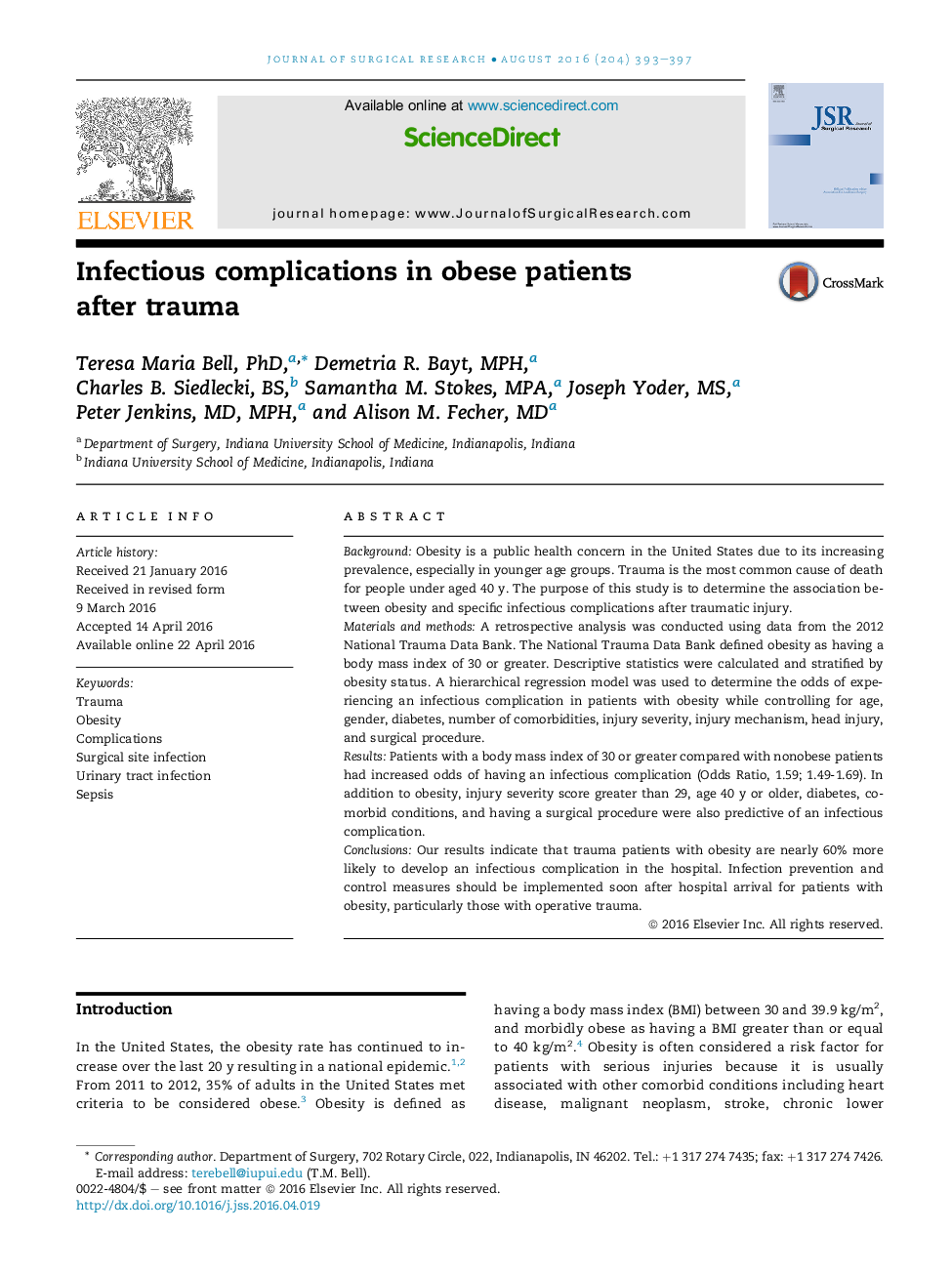| Article ID | Journal | Published Year | Pages | File Type |
|---|---|---|---|---|
| 4299126 | Journal of Surgical Research | 2016 | 5 Pages |
BackgroundObesity is a public health concern in the United States due to its increasing prevalence, especially in younger age groups. Trauma is the most common cause of death for people under aged 40 y. The purpose of this study is to determine the association between obesity and specific infectious complications after traumatic injury.Materials and methodsA retrospective analysis was conducted using data from the 2012 National Trauma Data Bank. The National Trauma Data Bank defined obesity as having a body mass index of 30 or greater. Descriptive statistics were calculated and stratified by obesity status. A hierarchical regression model was used to determine the odds of experiencing an infectious complication in patients with obesity while controlling for age, gender, diabetes, number of comorbidities, injury severity, injury mechanism, head injury, and surgical procedure.ResultsPatients with a body mass index of 30 or greater compared with nonobese patients had increased odds of having an infectious complication (Odds Ratio, 1.59; 1.49-1.69). In addition to obesity, injury severity score greater than 29, age 40 y or older, diabetes, comorbid conditions, and having a surgical procedure were also predictive of an infectious complication.ConclusionsOur results indicate that trauma patients with obesity are nearly 60% more likely to develop an infectious complication in the hospital. Infection prevention and control measures should be implemented soon after hospital arrival for patients with obesity, particularly those with operative trauma.
